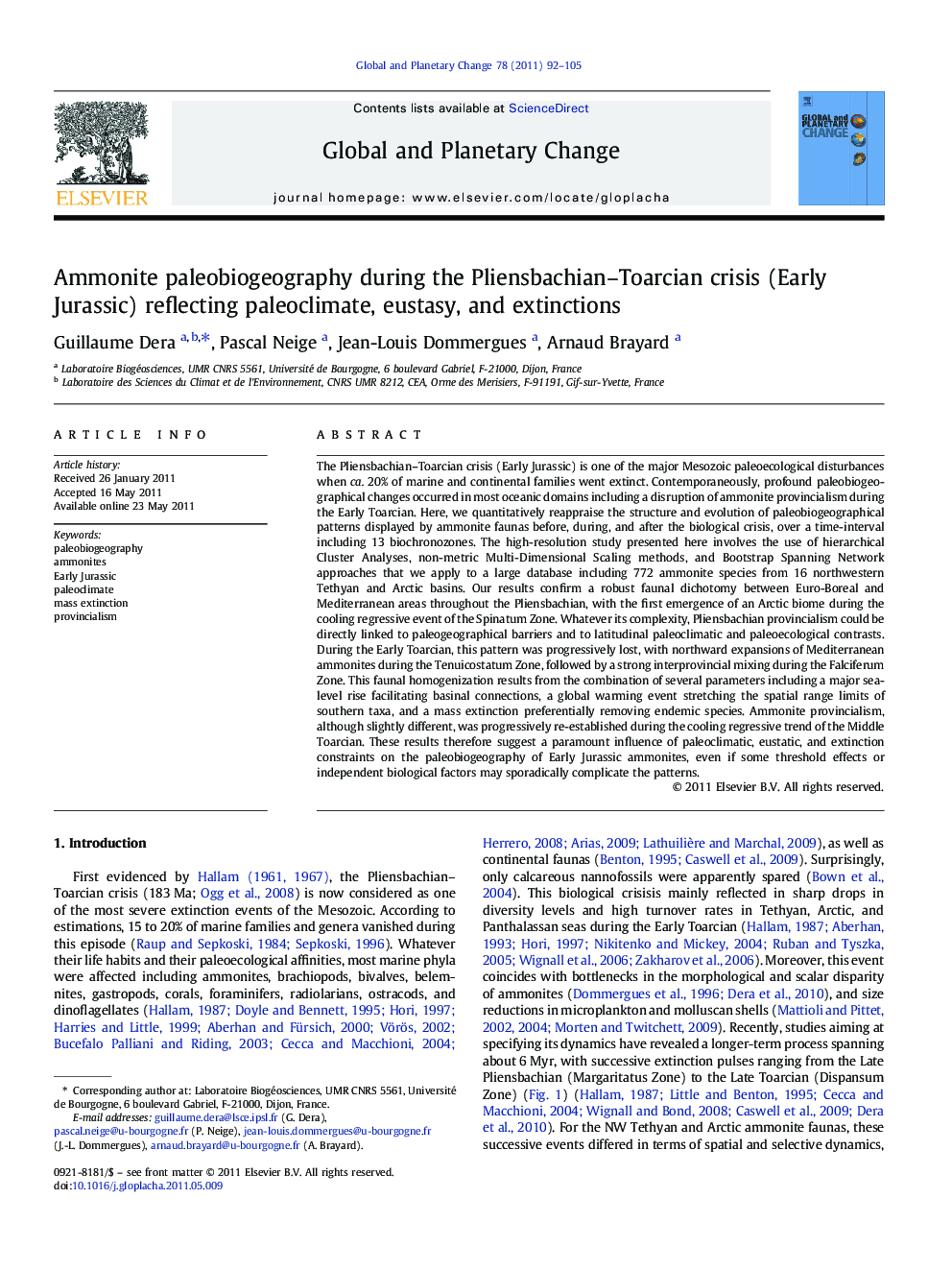| کد مقاله | کد نشریه | سال انتشار | مقاله انگلیسی | نسخه تمام متن |
|---|---|---|---|---|
| 4463824 | 1621694 | 2011 | 14 صفحه PDF | دانلود رایگان |

The Pliensbachian–Toarcian crisis (Early Jurassic) is one of the major Mesozoic paleoecological disturbances when ca. 20% of marine and continental families went extinct. Contemporaneously, profound paleobiogeographical changes occurred in most oceanic domains including a disruption of ammonite provincialism during the Early Toarcian. Here, we quantitatively reappraise the structure and evolution of paleobiogeographical patterns displayed by ammonite faunas before, during, and after the biological crisis, over a time-interval including 13 biochronozones. The high-resolution study presented here involves the use of hierarchical Cluster Analyses, non-metric Multi-Dimensional Scaling methods, and Bootstrap Spanning Network approaches that we apply to a large database including 772 ammonite species from 16 northwestern Tethyan and Arctic basins. Our results confirm a robust faunal dichotomy between Euro-Boreal and Mediterranean areas throughout the Pliensbachian, with the first emergence of an Arctic biome during the cooling regressive event of the Spinatum Zone. Whatever its complexity, Pliensbachian provincialism could be directly linked to paleogeographical barriers and to latitudinal paleoclimatic and paleoecological contrasts. During the Early Toarcian, this pattern was progressively lost, with northward expansions of Mediterranean ammonites during the Tenuicostatum Zone, followed by a strong interprovincial mixing during the Falciferum Zone. This faunal homogenization results from the combination of several parameters including a major sea-level rise facilitating basinal connections, a global warming event stretching the spatial range limits of southern taxa, and a mass extinction preferentially removing endemic species. Ammonite provincialism, although slightly different, was progressively re-established during the cooling regressive trend of the Middle Toarcian. These results therefore suggest a paramount influence of paleoclimatic, eustatic, and extinction constraints on the paleobiogeography of Early Jurassic ammonites, even if some threshold effects or independent biological factors may sporadically complicate the patterns.
Research highlights
► We quantitatively investigate the paleobiogeographical patterns of ammonite faunas during the Pliensbachian–Toarcian crisis (Early Jurassic).
► A strong latitudinal provincialism prevailed during the Pliensbachian, with a first emergence of distinct arctic species.
► This pattern was disrupted in two steps during the Early Toarcian, then progressively re-established during the Middle Toarcian.
► The paleobiogeographical changes are strongly linked to paleogeography, paleoclimate, eustasy, and extinction events.
Journal: Global and Planetary Change - Volume 78, Issues 3–4, August–September 2011, Pages 92–105